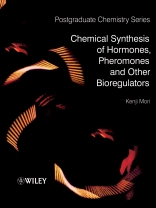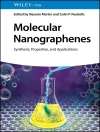Many small molecules occur naturally as ‘messenger’ chemicals which
regulate the behaviour and functions of microbes, plants, insects
and animals. Examples include hormones, pheromones, phytoalexins,
and antifeedants. These biofunctional molecules are of great
interest to researchers in helping develop our understanding of
biological function and in the development of new drugs. However
extracting them from nature can be prohibitively expensive, so
there is great interest in devising methods of synthesising them
from simple starting materials in the laboratory.
Chemical Synthesis of Hormones, Pheromones and Other
Bioregulators is an introduction to the techniques and
strategies for the synthesis of biofunctional small molecules.
Topics include:
* what are biofunctional molecules?
* why must biofunctional molecules be synthesized?
* how can we synthesize biofunctional molecules?
* the synthesis of phytohormones, phytoalexins and other
biofunctional molecules of plant origin
* the synthesis of insect juvenile hormones and antifeedants
* the synthesis of pheromones and the significance of chirality
in pheromone science
* the synthesis of microbial hormones and pheromones,
antibiotics, and other biofunctional molecules of microbial
origin
* the synthesis of marine antifeedants and medicinal
candidates
* a synthetic examination of incorrectly proposed structures of
biomolecules
* reflections on science as a human endeavor
Drawing on a career of almost 50 years researching and teaching
this subject, Kenji Mori’s Chemical Synthesis of Hormones,
Pheromones and Other Bioregulators is a must-have textbook for
students and researchers of organic synthesis and natural products,
and a stimulating and inspiring account of a distinguished chemical
career.
Содержание
Preface
Abbreviations
1. Introduction — Biofunctional Molecules and Organic Synthesis
1.1 What are biofunctional molecules?
1.2 Developmental stages of studies on biofunctional molecules
1.3 Small amounts of the samples are now sufficient for the elucidation of the structures of biofunctional molecules
1.4 Why must biofunctional molecules be synthesized?
1.5 How can we synthesize biofunctional molecules?
1.6 What kinds of knowledge and techniques are necessary to synthesize biofunctional molecules?
References
2. Synthesis of Phytohormones, Phytoalexins and Other Biofunctional Molecules of Plant Origin
2.1 Phytohormones
2.2 Phytoalexins
2.3 Plant allelochemicals
2.4 Other bioactive compounds of plant origin
References
3. Synthesis of Insect Bioregulators other than Pheromones
3.1 Insect juvenile hormones
3.2 Insect antifeedants
3.3 Insect repellents
References
4. Synthesis of Pheromones
4.1 What are pheromones?
4.2 Methods for enantioselective synthesis
4.3 Why is it meaningful to synthesize enantiopure pheromones ?
4.4 Chiral pheromones whose single enantiomers show bioactivity
4.5 Chiral pheromones whose stereochemistry-bioactivity relationships are diverse and complicated
4.6 Significance of chirality in pheromone science
References
5. Synthesis of Biofunctional Molecules of Microbial Origin
5.1 Microbial hormones
5.2 Antibiotics
5.3 Other biofunctional molecules of microorganisms
References
6. Synthesis of Marine Bioregulators, Medicinals and Related Compounds
6.1 Marine natural products of ecological importance such as antifeedants
6.2 Marine natural products of medicinal interest
6.3 Glycosphingolipids and sphingolipids of medical interests
References
7. Synthetic Examination of Incorrectly Proposed Structures of Biomolecules
7.1 Origin of incorrect or obscure structures
7.2 Structure fabrications of historical interest
7.3 Incorrect structures resulting from inappropriate use of purification or analytical methods
7.4 Inappropriate structural proposal caused by problems in bioassay methods
7.5 Human errors are inevitable in chemistry, too
References
8. Conclusion — Science as a Human Endeavor
8.1 Small molecules are also beautiful
8.2 Continuous efforts may bring something meaningful
8.3 Can a scientist eventually have a hope in future?
Acknowledgments
Index
Об авторе
Professor Kenji Mori has nearly 50 years experience researching and teaching the synthesis of biofunctional small molecules. He has been awarded the Japan Academy Prize (1981), the Silver Medal of the International Society of Chemical Ecology (1996), the American Chemical Society’s Ernest Guenther Award in the Chemistry of Natural Products (1999), the Special Prize of the Society of Synthetic Organic Chemistry, Japan (2003), and the Frantisek Sorm Memorial Medal of the Academy of Sciences of the Czech Republic (2003). He is the author of ‘The Total Synthesis of Natural Products, Vol. 9’ (Wiley, 1992), considered by many to be the authoritative volume on pheromone synthesis, and over 750 peer-reviewed research papers.












